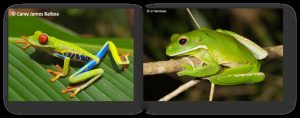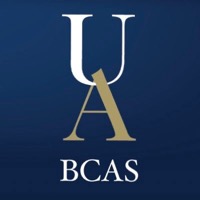[Past Projects]
Dr. Henry Astley, Dr. Peter Niewiarowski, Derek Jurestovsky, and Austin Garner

Research Description
Tree frogs secrete a mucous on the bottom of their micropatterned toe pads that permit them to adhere to surfaces like two wet glass microscope slides stuck together (capillary adhesion). Theoretically, tree frog adhesion should not be dependent on whether the surface of interest repels or attracts water because the secreted mucous is capable of sustaining adhesive contact on a variety of surfaces. In this study, we will measure live tree frog adhesion under dry, misted with water, and wet conditions using a variety of artificial surfaces that range in their water repellency.
Benefits of this Research Experience
Undergraduate students in the Astley and Niewiarowski labs will gain an array of critical research skills including: amphibian care and handling, live animal performance measurements, experimental design, statistics, microscopy, surface characterization methods, scientific writing, and more. Additionally, many of the undergraduate students in our labs have been co-authors on several papers published in peer-reviewed journals (see below)!

*Denotes undergraduate student
Niewiarowski, P. H., Lopez, S., Ge, L., Hagan, E.* and Dhinojwala, A. (2008). Sticky gecko feet: the role of temperature and humidity. PLoS. ONE 3, e2192.
Niewiarowski, P. H., Stark, A., McClung, B.*, Chambers, B.* and Sullivan, T.* (2012). Faster but Not Stickier: Invasive House Geckos Can Out-Sprint Resident Mournful Geckos in Moorea, French Polynesia. J. Herpetol. 46, 194-197.
Stark, A. Y., Sullivan, T. W.* and Niewiarowski, P. H. (2012). The effect of surface water and wetting on gecko adhesion. J. Exp. Biol. 215, 3080-6.
Stark, A. Y., Badge, I., Wucinich, N. A.*, Sullivan, T. W.*, Niewiarowski, P. H. and Dhinojwala, A. (2013). Surface wettability plays a significant role in gecko adhesion underwater. Proc Natl Acad Sci U S A 110, 6340-5.
Stark, A. Y., Wucinich, N. A.*, Paoloni, E. L.*, Niewiarowski, P. H. and Dhinojwala, A. (2014). Self-drying: a gecko’s innate ability to remove water from wet toe pads. PLoS ONE 9, e101885.
Stark, A. Y., McClung, B.*, Niewiarowski, P. H. and Dhinojwala, A. (2014). Reduction of water surface tension significantly impacts gecko adhesion underwater. Integr. Comp. Biol 54, 1026-33.
Badge, I., Stark, A. Y., Paoloni, E. L.*, Niewiarowski, P. H. and Dhinojwala, A. (2014). The role of surface chemistry in adhesion and wetting of gecko toe pads. Scientific Reports 4, 6643.
Stark, A. Y., Ohlemacher, J.*, Knight, A.* and Niewiarowski, P. H. (2015). Run don’t walk: locomotor performance of geckos on wet substrates. J. Exp. Biol. 218, 2435-41.
Stark, A. Y., Palecek, A. M.*, Argenbright, C. W., Bernard, C.*, Brennan, A. B., Niewiarowski, P. H. and Dhinojwala, A. (2015). Gecko adhesion on wet and dry patterned substrates. PLoS. ONE 10, e0145756.
Stark, A. Y., Dryden, D. M., Olderman, J.*, Peterson, K. A., Niewiarowski, P. H., French, R. H. and Dhinojwala, A. (2015). Adhesive interactions of geckos with wet and dry fluoropolymer substrates. J. R. Soc. Interface 12, 20150464.
Stark, A. Y., Subarajan, S.*, Jain, D., Niewiarowski, P. H. and Dhinojwala, A. (2016). Superhydrophobicity of the gecko toe pad: biological optimization versus laboratory maximization. Phil. Trans. R. Soc. A 374, 20160184.
Klittich, M. R., Wilson, M. C., Bernard, C.*, Rodrigo, R. M.*, Keith, A. J.*, Niewiarowski, P. H. and Dhinojwala, A. (2017). Influence of substrate modulus on gecko adhesion. Scientific Reports 7, 43647.
Garner, A. M.*, Stark, A. Y., Thomas, S. A. and Niewiarowski, P. H. (2017). Geckos go the Distance: Water’s Effect on the Speed of Adhesive Locomotion in Geckos. J. Herpetol. 51, 240-244.
